(3 minute read)
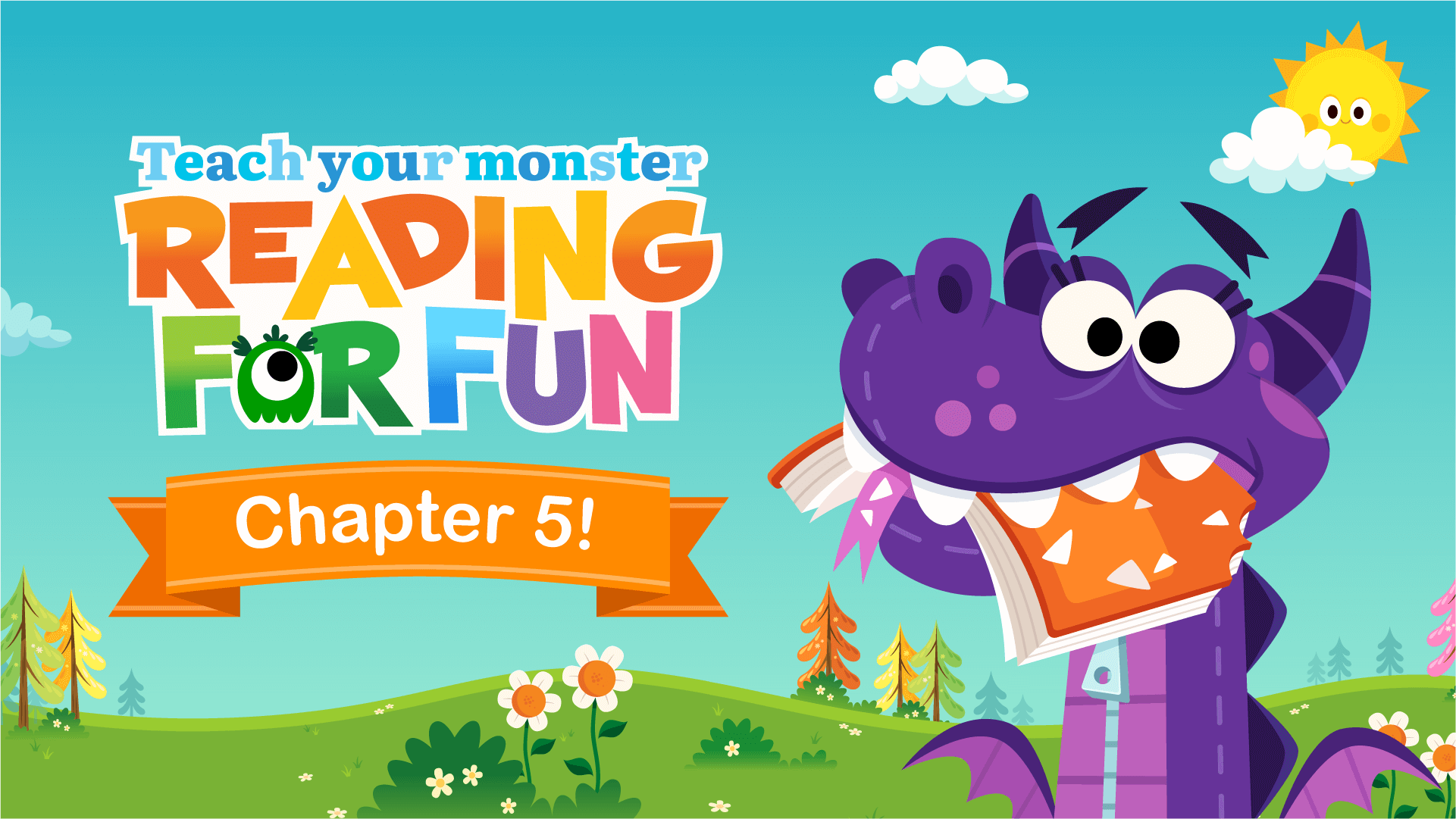
We get a lot of requests at Teach Your Monster for what our players want in our games, but we get an AWFUL lot demanding new chapters in Reading for Fun...
★★★★★ Best game ever but needs a new chapter · I love this app so much!
"The chapters are really funny with the goblin and the evil duck! But can you add chapter 5 soon, that will be very lovely”
★★★★★ Chapter 5. I'm also your biggest fan!
"Dear Teach Your Monster teams, we are really excited for chapter 5! We have some cool ideas about the goblin and the evil duck can’t wait to see what you come up with!”
Well, we have exciting news! We are very pleased to announce that Reading for Fun Chapter 5 has arrived!
Reading for Fun is our follow-on game from Teach Your Monster to Read, for children who have mastered their phonics and are confident at reading sentences. The great thing about Reading for Fun is that any sentence on-screen can be tapped or clicked, and it will be read aloud in the game, so even less-confident readers are supported with independent reading. With four extensive chapters until now, Reading for Fun has had 35 million plays in total with over 9 million books read.
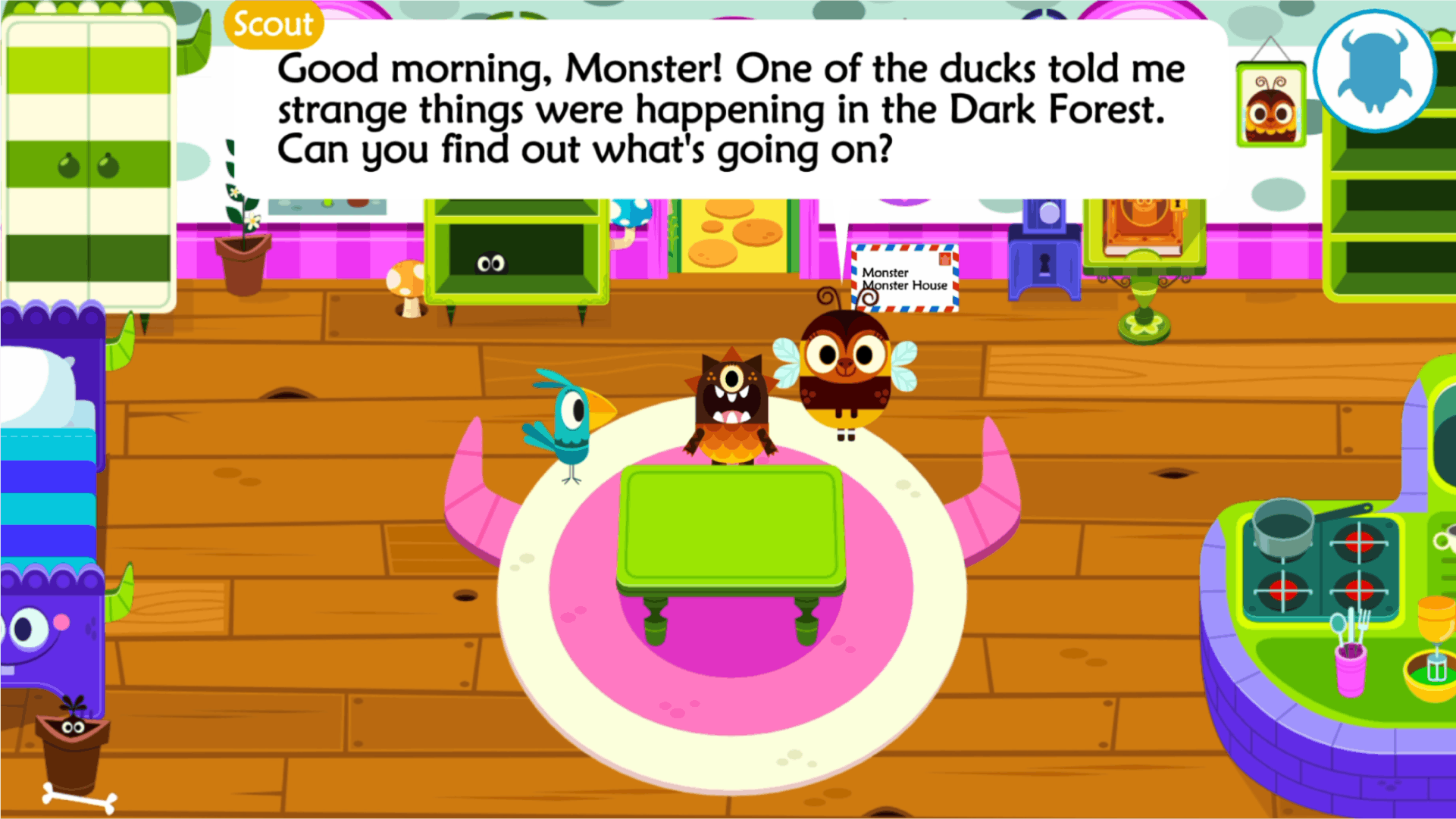
Well, our team has been working hard over the past few months to bring this additional chapter, full of mystery and lots of reading opportunities, including delivering invites, reading master plans and even a brand new book! The latest chapter has five new parts of the story revealing a BIG secret about the Book-Eating Goblin… Can your monster and the villagers work together and distract the evil duck long enough to save the day?
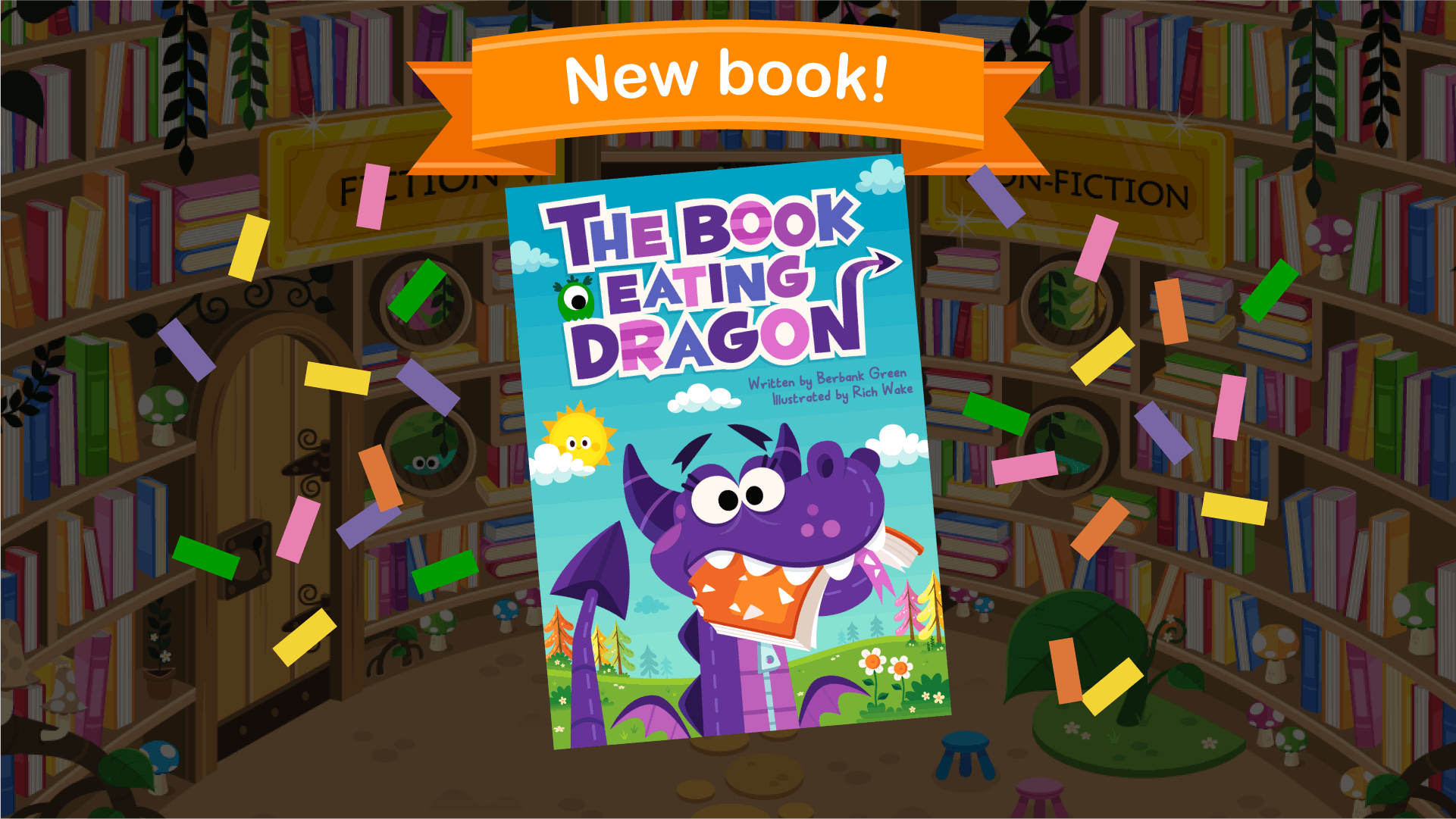
As well as Chapter 5, a new book is unlocked! The Book-Eating Dragon is a new book by Berbank Green and Rich Wake, all about a mad and misunderstood dragon and his terrible eating habits… play and find out how the villagers help the dragon through his woes. Complete Chapter 5 to earn “The Book-Eating Dragon” to add to your monster’s library – an exciting new reward for brave readers!
Tell your kids to check out the new chapter and make new reading friends in Reading For Fun today!

Alex Goss, Product Manager for Reading for Fun
(3 minute read)
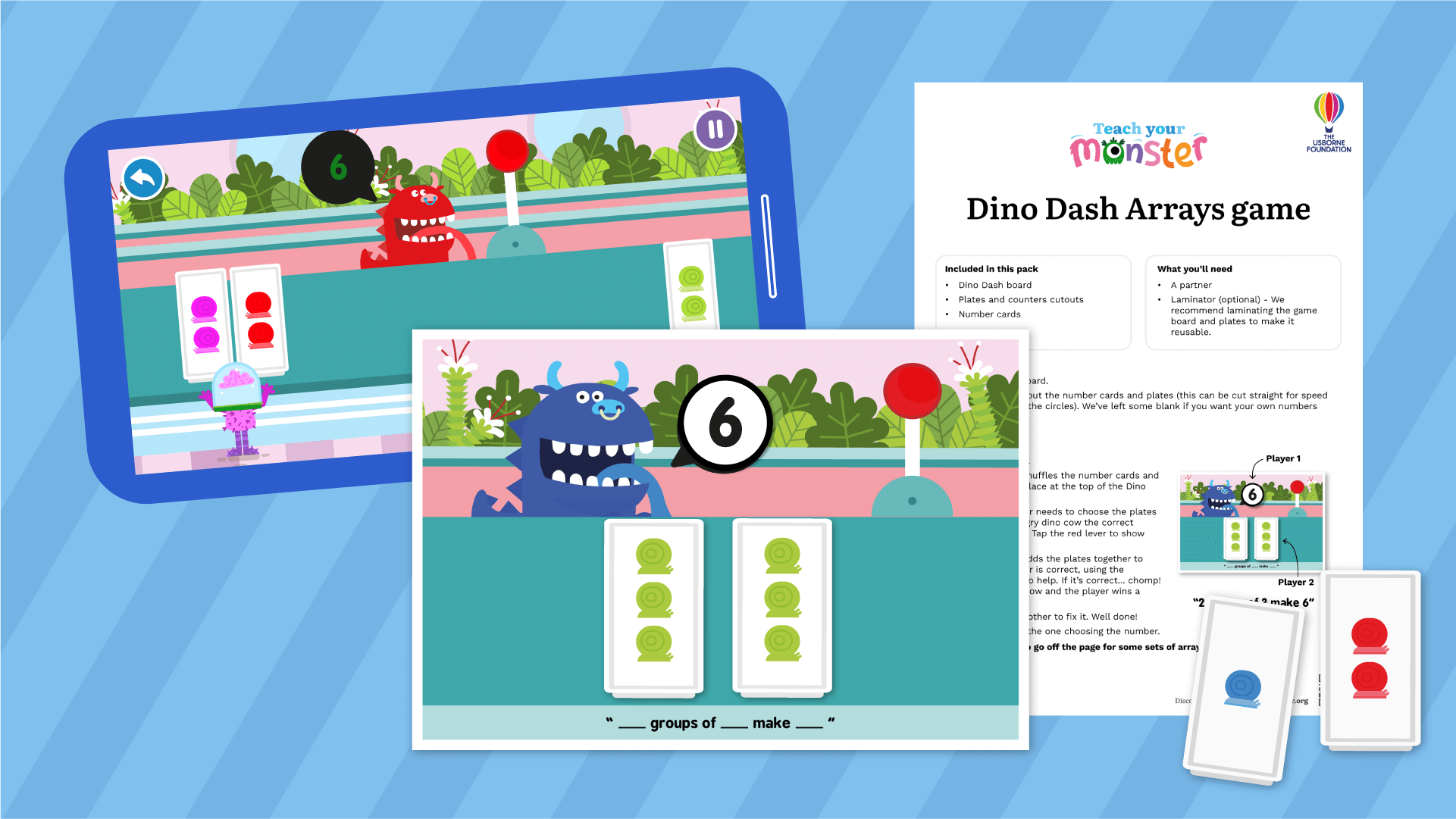
At Teach Your Monster, we’re always looking for new ways to get more monster time in our day. So we thought about how great it would be to have some monster time without having to be on-screen - that’s where our printable resources come in. But just how to get the games off the screen and on to paper…?
We wanted to try this with our Number Skills minigames, adapting them into fun, hands-on activities that could be played either in the classroom or at home.
Drawing on my knowledge of the Kagan Cooperative Learning principle of ‘creating cooperative learning opportunities’ for kids, whilst sticking to the Teach Your Monster belief that learning should be both enjoyable and educational, making these activities into playable partner games seemed like a natural fit.
To begin, I used the original game graphics, simplifying them for easier understanding and to ensure they could be printed efficiently. Then it was onto the task of tackling the game mechanics and adapting them for a non-digital format. The transition from screen-based games to paper-and-counter versions required thoughtful consideration, especially when it came to keeping the spirit of the games intact.
One example of this is the Rollercoaster Game, which focuses on number bonds to 10. In its original digital minigame, one player would be presented with a choice of two numbers in order to complete the number bond to make a number up to 10.

In the paper version, a more collaborative approach was needed. One partner chooses a number for the other to create inside the number frame using counters. This setup adds a greater element of problem-solving, making the experience slightly more challenging. Thankfully, with two brains working together, this challenge becomes a fun and cooperative task!
As well as the Rollercoaster Game Number Bonds to 10, some of our other minigames have been adapted into partner games too:
Bumper Cars Game Numbers to 10 - This game helps students practice recognising numbers to 10 using printable sheets and counters. It’s perfect for reinforcing foundational math skills in a hands-on way.
Monster Trucks Game Numbers to 20 - Like bumper cars, but with higher numbers! This activity helps children practice counting to 20.
Rollercoaster Number Bonds to 20 - A continuation of the original Rollercoaster Game, this version challenges students to practice number bonds to 20. Again, the game is designed to be played with a partner, reinforcing teamwork and collaboration.
Dino Dash Arrays Game - practice arrays in a fun and engaging way. Based on the popular Dino Dash minigame, it can be played with printable resources to help children visualize and understand the concept of arrays.
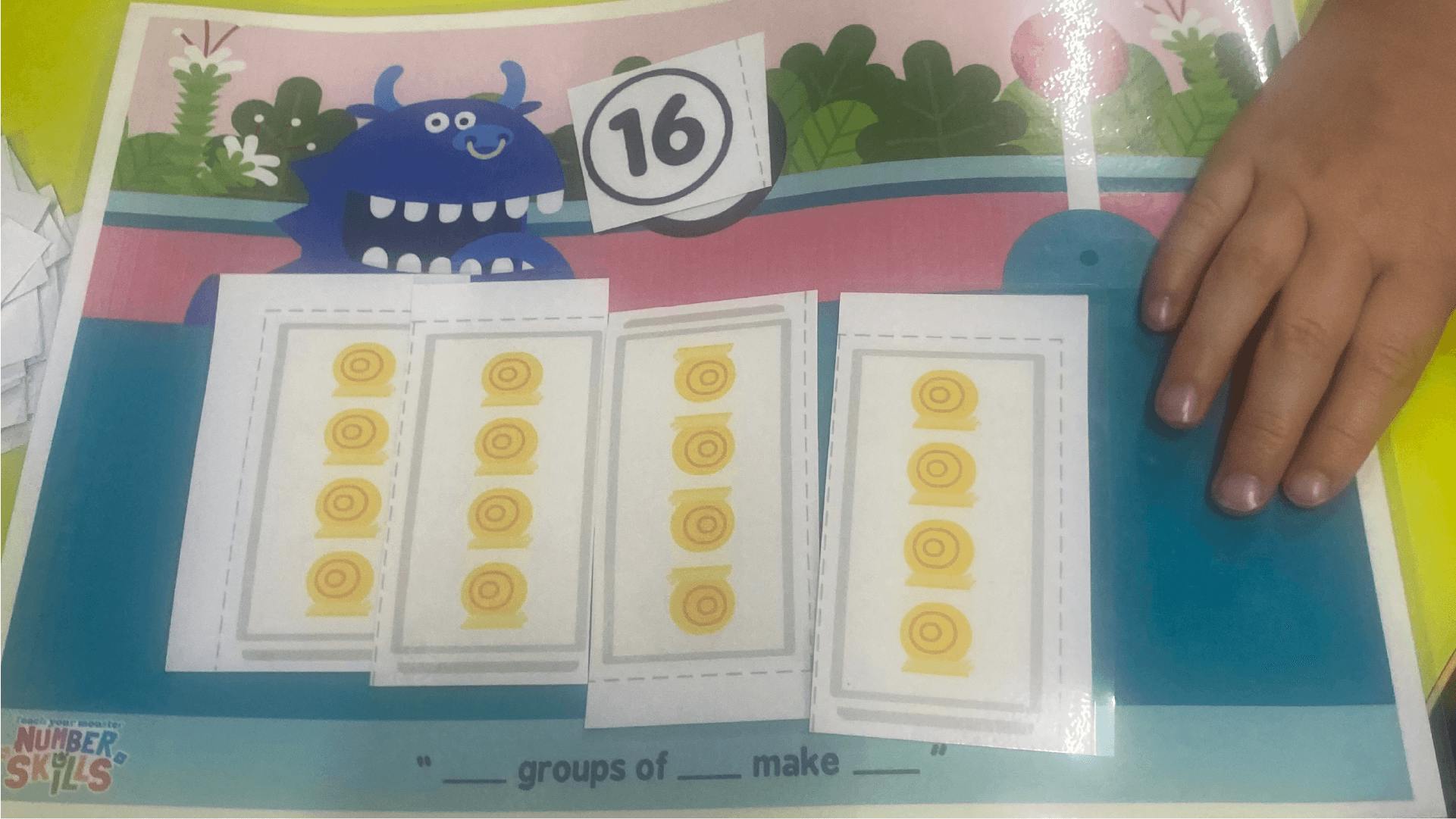
Click here to see and download and play our fun Number Skills games today and try them out with your kids!
Kay Leathers, freelance consultant for Teach Your Monster and ex-primary school teacher!
(2 minute read)
It’s that time of year again in the UK - the sun is making its way back through the gray of winter and paying us more than a kindly visit. April is also ‘Stress Awareness Month’, and with increasing links between growing produce and mental well-being, we think it's a good time to get out in the garden or grow some yummy things on your windowsill with your kids. It’s more than just a fun activity—it’s a little bit of everyday magic.
They’ll learn that good things take time, that plants need care (and the occasional pep talk), and that tiny actions—like watering a seed—can lead to big results. Watching something grow because they nurtured it? That’s some powerful confidence-building.
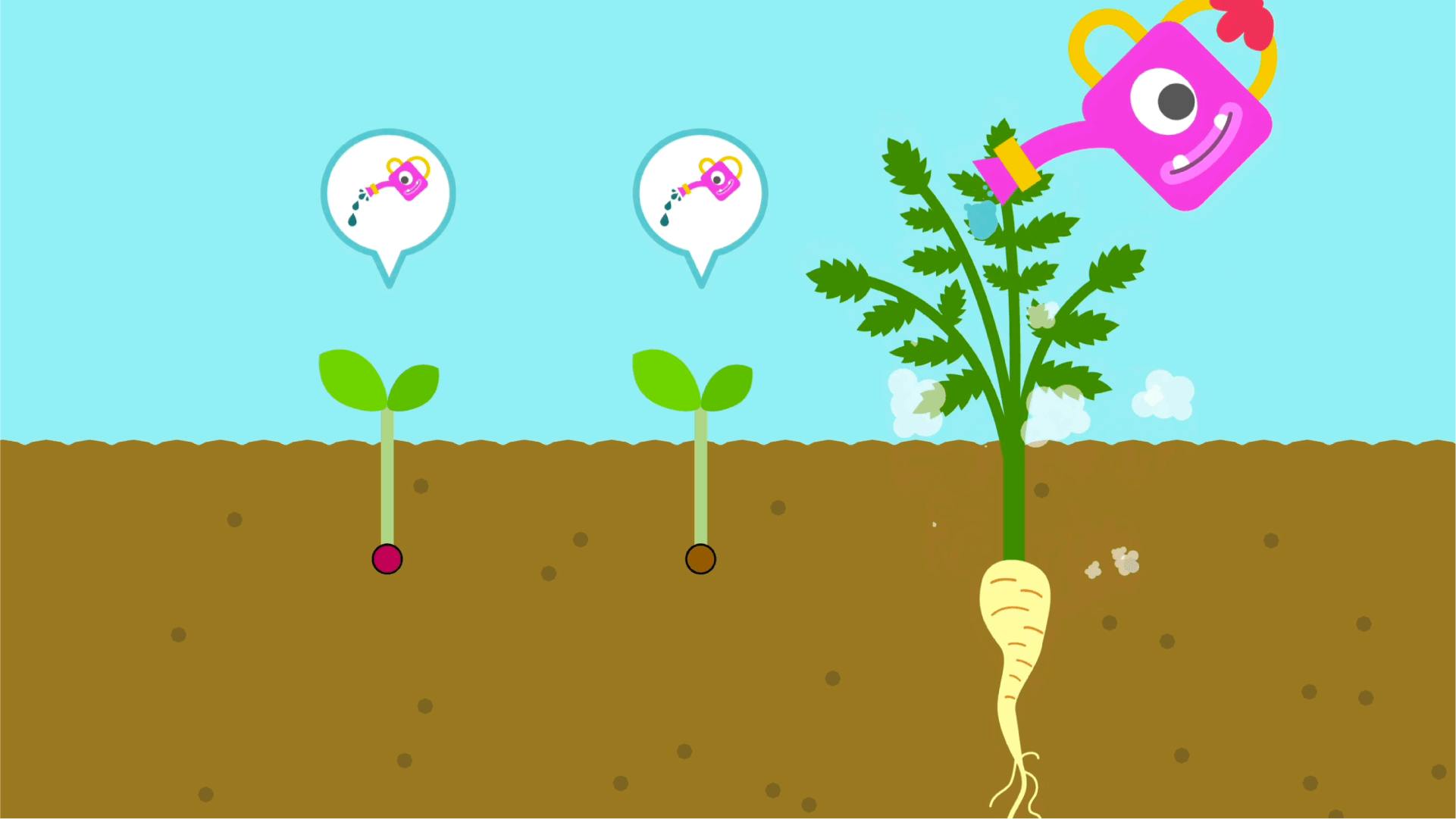
When our team was discussing the next steps for Adventurous Eating, it felt natural for us to introduce ‘the growing game’, where kids get to see the part before the food arrives on their plate. In the growing game, kids encourage their monster to plant and water seeds until they grow big enough for harvesting. Once harvested, the seeds are prepped to be fed to our hungry monster Bub!
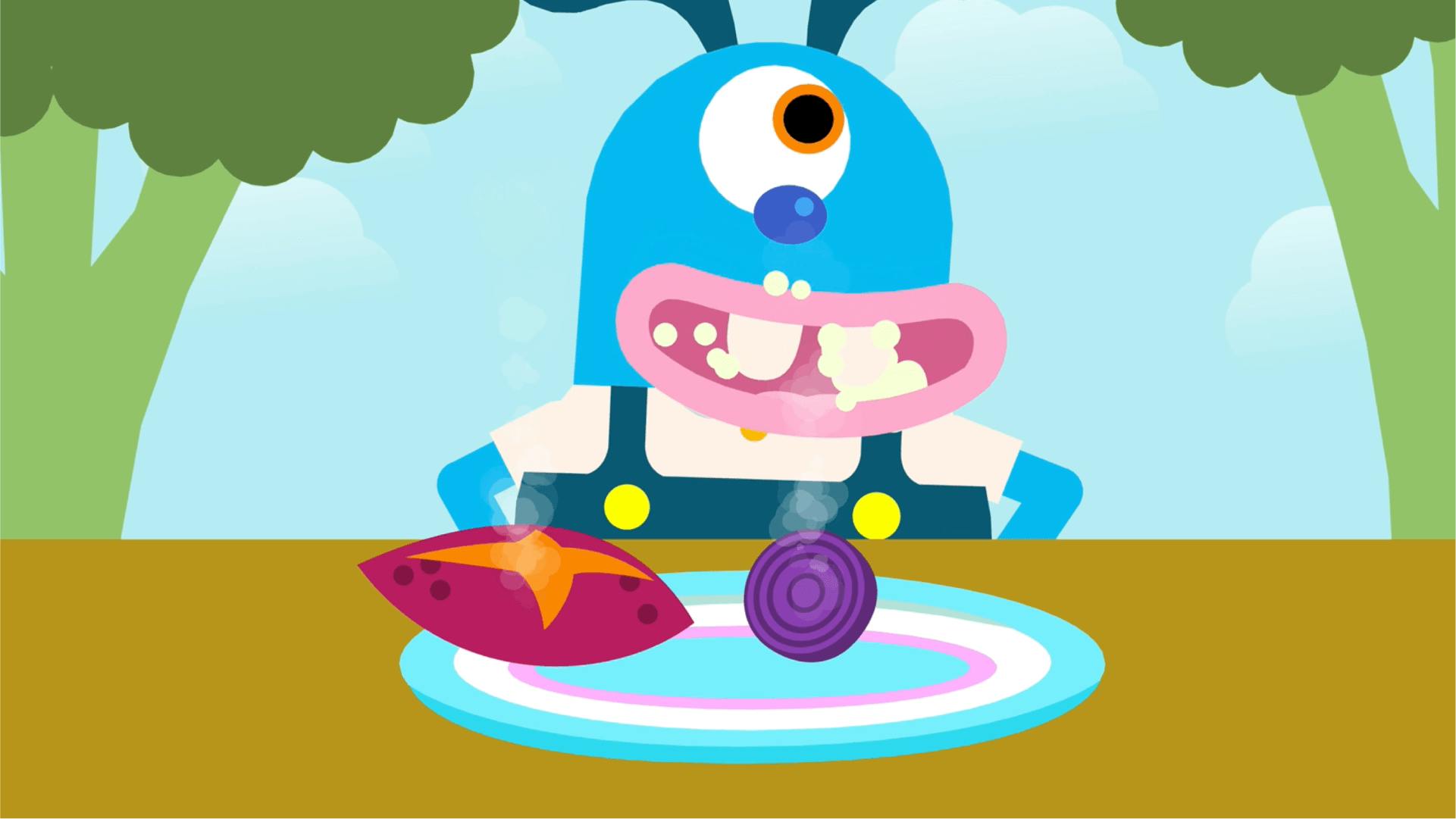
In the real world, growing fruit and veg connects kids to where food actually comes from—and it might just turn your picky eater into a proud produce snacker. It also serves as an introduction to many early science topics. It is a hands-on way to learn about seasons, life cycles, and ecosystems without even really trying.
More than anything, gardening is about making memories. We asked some of our monsters here at Teach Your Monster HQ, and they certainly had some fond memories of growing plants as kids, including one 1st prize-winning daffodil grower (in 1980)!
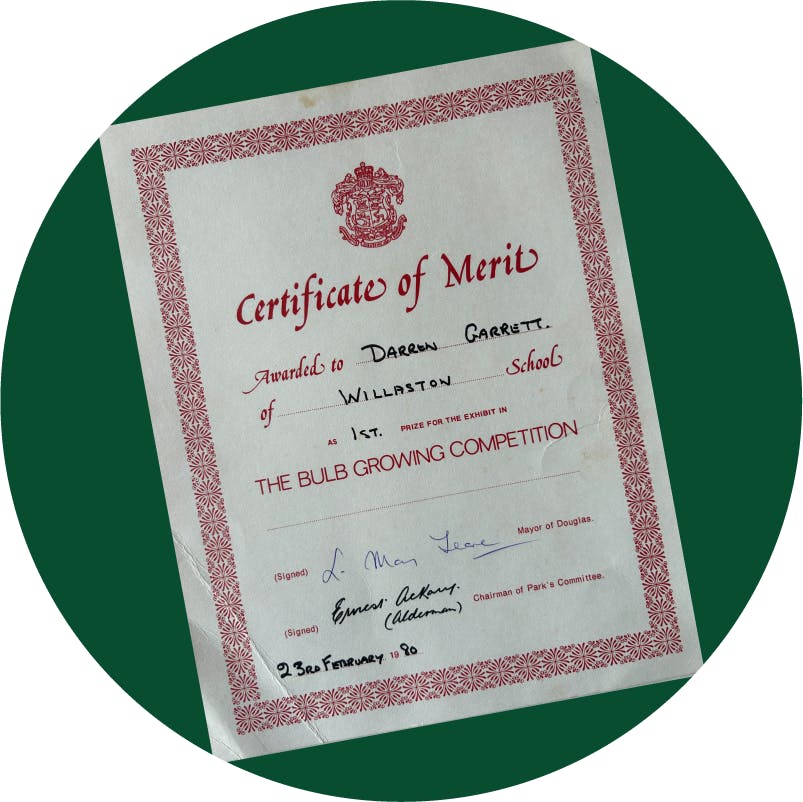
One of our game developers shared this memory:
“I won the tallest sunflower competition, which was grown in my grandad's back garden. We had a photo in Thornbury's local paper with me on his shoulders next to the flower to demonstrate its AWESOME HEIGHT. My memory is hazy, but I strongly suspect that my grandad did all the work here. As a result, I won a bird table, which is exactly what every 7-year-old wants, if you ask me.”
Another shared a memory of growing cress in an empty eggshell with a face. Well, we thought this was an absolutely fabulous idea, so we came up with our own monster version: Grow your own Cress Monster!
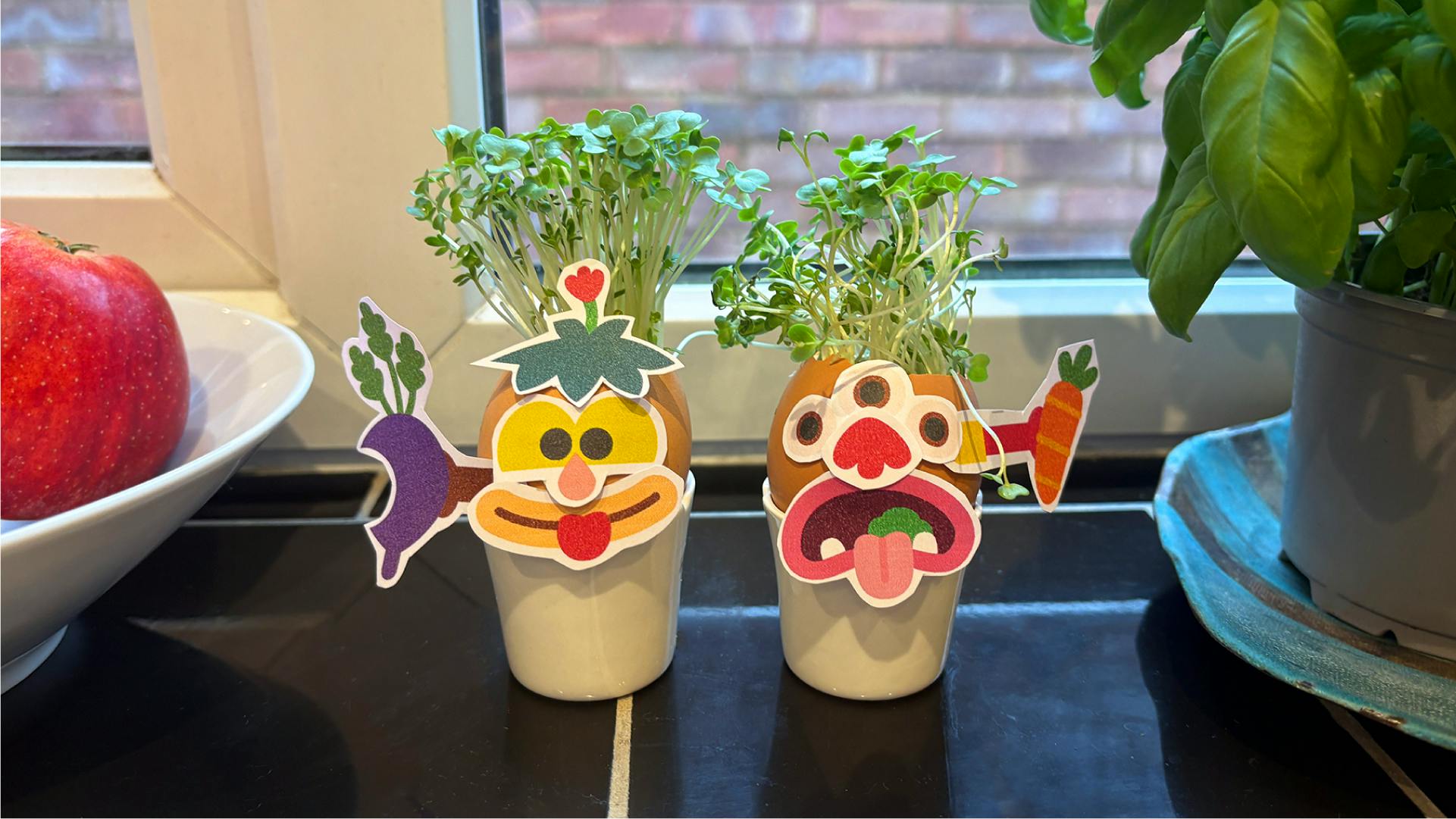
Cress is super easy, quick to grow and delicious in a sandwich, making it a rewarding growing experience to have with your kids. All you need is some cress seeds, an egg, some cotton wool and scissors. The cress should sprout within 7 days and be ready to harvest in just a few weeks!
Download your ‘Grow your own Cress Monster’ instructions here.
(4 minute read)

We asked Adam Samuel, a class teacher at Abbott Alphege Academy, about ‘reading for pleasure’ and how our game, Teach Your Monster Reading for Fun, connects the worlds of reading for pleasure and technology.
Who are you and what do you do?
My name is Adam Samuel. I am a class teacher at Abbot Alphege Academy.I currently teach a year three-four class.
I'm a jack of all trades in school. The beautiful thing about being a primary school teacher is that you do a bit of everything. So I'm also the computing subject lead and modern foreign language lead. So I'm not the reading lead, but I am passionate about reading.
That's the nice thing about being a primary school teacher is you get to share a love and a passion for multiple things with the children, rather than just one.
How important do you feel reading for pleasure is for kids?
So important! It's a way of creating new worlds and new experiences. A lot of children can get overwhelmed with the world and with life. Reading a book, having the opportunity to lose yourself in someone else’s creation or world, whether it be Julia Donaldson, Rachel Bright or Jim Field, is an escape. Children need to be given the opportunity to escape into these worlds to have a broader appreciation for life in general, and it develops a love and passion for books.
What struggles do the kids in your class experience in reading for pleasure?
Access to books. We have a nice library at school, and we have a local library, but one of the biggest struggles is maintaining that at home. We don't know what they (the kids) have at home and what their access is like at home.
Ensuring they have access to a wide range of books is another struggle. Showing them how to engage with books and maintaining that engagement as well. It's quite easy for some children to get hooked on one genre, which is great, but also allows them an opportunity to broaden that reading passion.
Why can it be hard to instil a love of reading in young children?
I think with young children, we're constantly battling the modern world. Technology is always offering new and exciting things for children to be doing, whether it's a new game to play or a new media platform to engage with. Picking up a book is probably the least of their interests. So I think it's important for us to find new ways of ensuring that children maintain their love and interest in reading.

Can you tell us about your experience with Teach Your Monster Reading for Fun?
Teach Your Monster Reading for Fun is absolutely fantastic in ensuring that children maintain a passion for reading and are exposed to a wide range of texts. It's engaging. It's fun. And it crosses two worlds. It crosses the world of technology with the world of books. Today, it’s really important that we bring those two together. Otherwise, we'll just have kids lost in games, without developing essential skills, such as reading.
How does the game help you as a teacher with reading for pleasure?
Reading for Fun helps as a teacher because it gives children an engaging way of accessing books that's different to just going into the library or a bookshop. It's quite easy to get lost and overwhelmed by too many books. And what's nice with Reading for Fun is that it's a smaller number of books that they can engage with over whatever time frame they want. They get to do little jobs and little activities within the game that allow them to do more than just reading. So they are reading without necessarily always knowing that they're reading, so it's multifaceted, which is great.
The other nice thing about Reading for Fun is the fact that they earn the books incrementally, and they get to earn them as rewards and collect them in a library. So when they go into their home, you can see the books piling up on their bookshelves, just like they might at home. They can go into their bookshelf and select the book they want to read that they've earned as a reward for these jobs, which is really nice.
Do you have any special tips for other teachers on how to integrate it into their classroom practice?
My tip for other teachers is to download Teach Your Monster Reading for Fun, give the children some logins, and see how much they engage with and have fun with it. It will change your day.
Also download the login details for each child, stick it in the front of their read and record books. Send it home so that they can engage with it at home as well as at school.
Do you recommend that parents use the game at home, and if so, how?
I would. It's a great way of engaging your children to read and exposing them to a wide range of books. It's also really handy if you want to distract your children with a book in the car on a long journey. Or maybe you're going away on holiday and you want the children to be quiet for a little bit, and it's a nice way of engaging them and keeping them occupied while you're out and about.
It doesn't need to be used for long. Even just 10 to 20 minutes a day could be the difference between a child who is engaged with reading and a child who's not, and the child who's passionate for reading and a child who's not.
This article was just a snippet of our larger case study interview, which you can read here.
(3 minute read)
We’re always happy to hear how our teachers use our games for the maximum effect, and as many teachers return from their half terms here in the UK, we thought it would be a good time to share a few different ideas on how teachers around the world use and integrate Teach Your Monster games in the classroom.
The following suggestions can be a 5-minute warm-up, a time-filler, or even a way to jazz up your full lesson with a whole hour of learning…
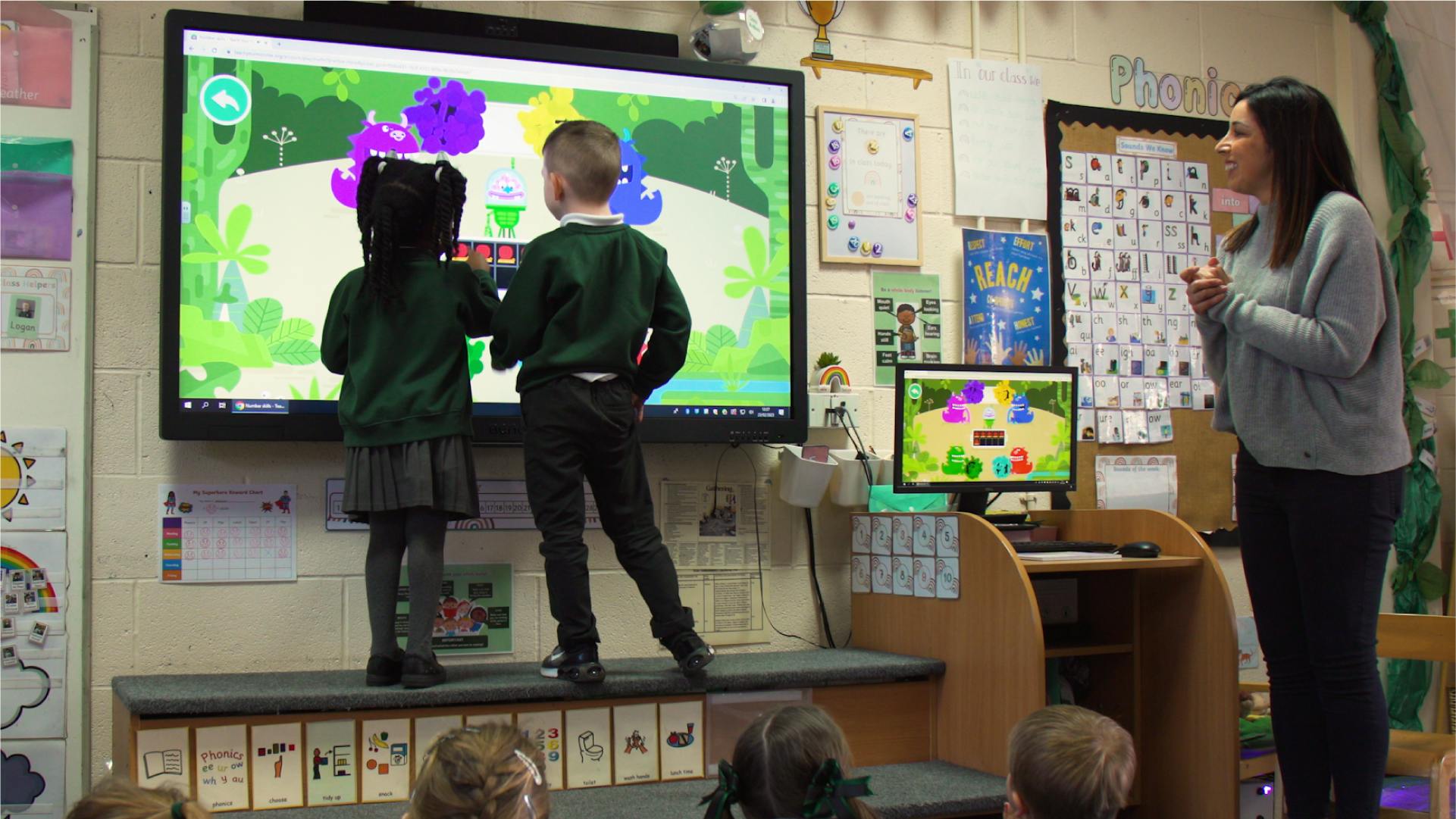
Carpet time
During carpet time, the teacher can select a game to demonstrate playing on the interactive whiteboard and then allow the children to take turns or come up in pairs to play.
If you’d like to lead the learning (and keep bottoms on carpets!), you can give each child a whiteboard to use and ask the children questions like:
“Which number comes next? Write it in secret on your whiteboard” (Number Skills)
“How do you write this grapheme? Can you think of any other ways to write it?” (Teach Your Monster to Read)
They can respond on whiteboards and show you when they’ve finished.
Use our game Reading for Fun to select a book and read together as a class for a calming activity. Teachers can be pretty hands-off with this if you get a ‘lucky helper’ from the class to turn the page, and it is perfect if you need 5 minutes to set up for the next activity of the day.
Use for individual learning (where children have access to individual devices or laptops)
Set up children with their own profiles and let them take their monster through the game—this allows kids to play at their own pace and recap necessary skills. For brand new players, you can demonstrate the log-in and game on the interactive whiteboard first, then allow them to explore independently.
One of our super fans, teacher Lori Cash, recommends peer-to-peer help for new players or selecting game ‘prefects’ to teach other kids how to play.
Teachers can ask children to go to ‘Practice Mode’ during individual play for a particular skill, game, or number, providing targeted practice on weaker skills.
Use in a carousel, centres or ‘learning stations’
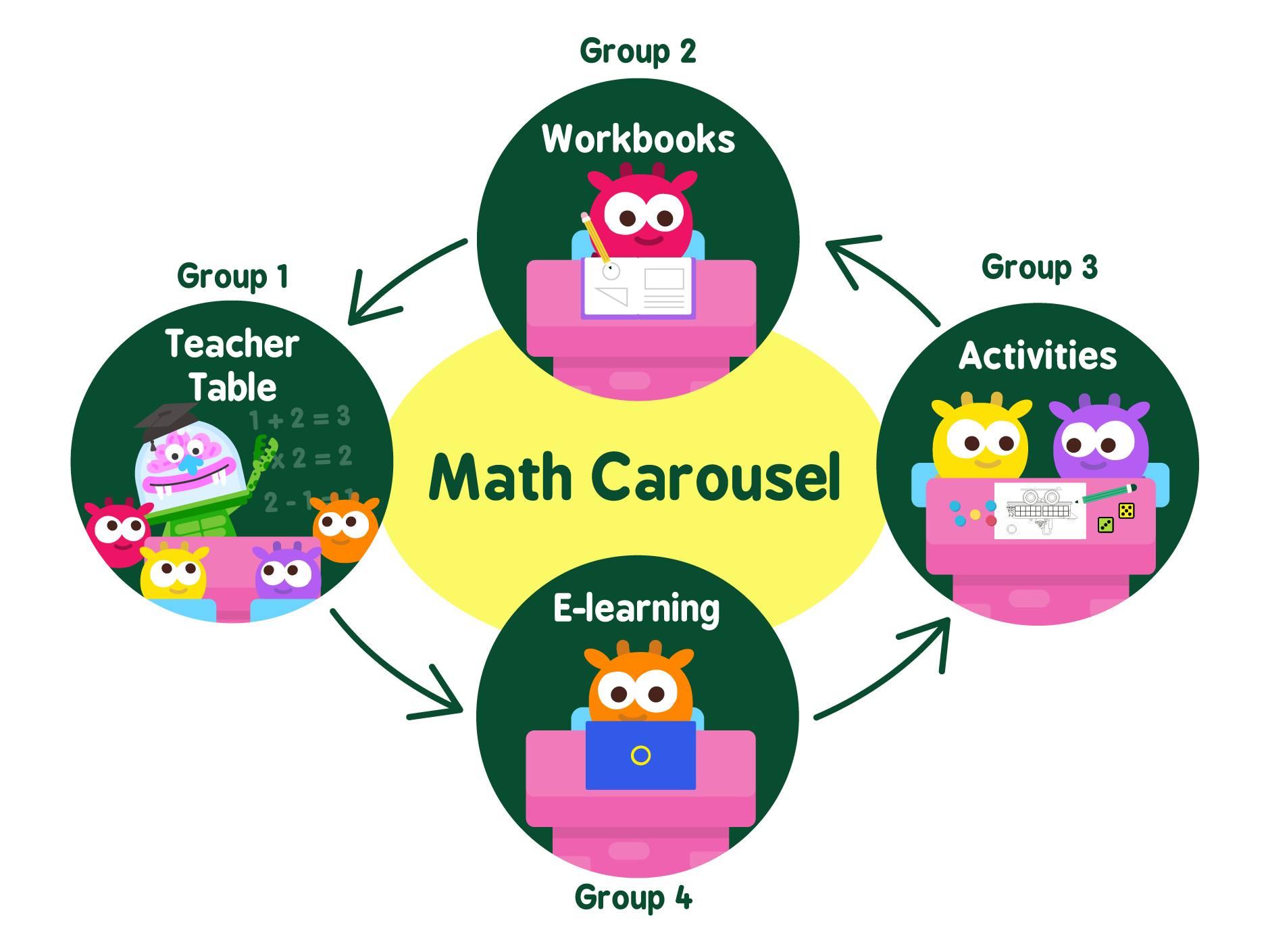
If you like to set up ‘stations’ for learning, one station could be set up for ‘e-learning ’ with devices to practice a specific subject using one of our games. If you’re not sure what ‘stations’ are, read more about them in this handy article.
For reading time, this station could be Teach Your Monster to Read for early readers, or Reading for Fun for more progressed readers.
For math lessons, this station could be set up with Number Skills, either with specific goals in mind using ‘Practice Mode’, or more of free play time through the adventure mode. We’ve provided a handy printable for you to download and print for your focused Number Skills station here.
We also have a whole bunch of handy printables for the other stations in class too, find those here.
Reward time
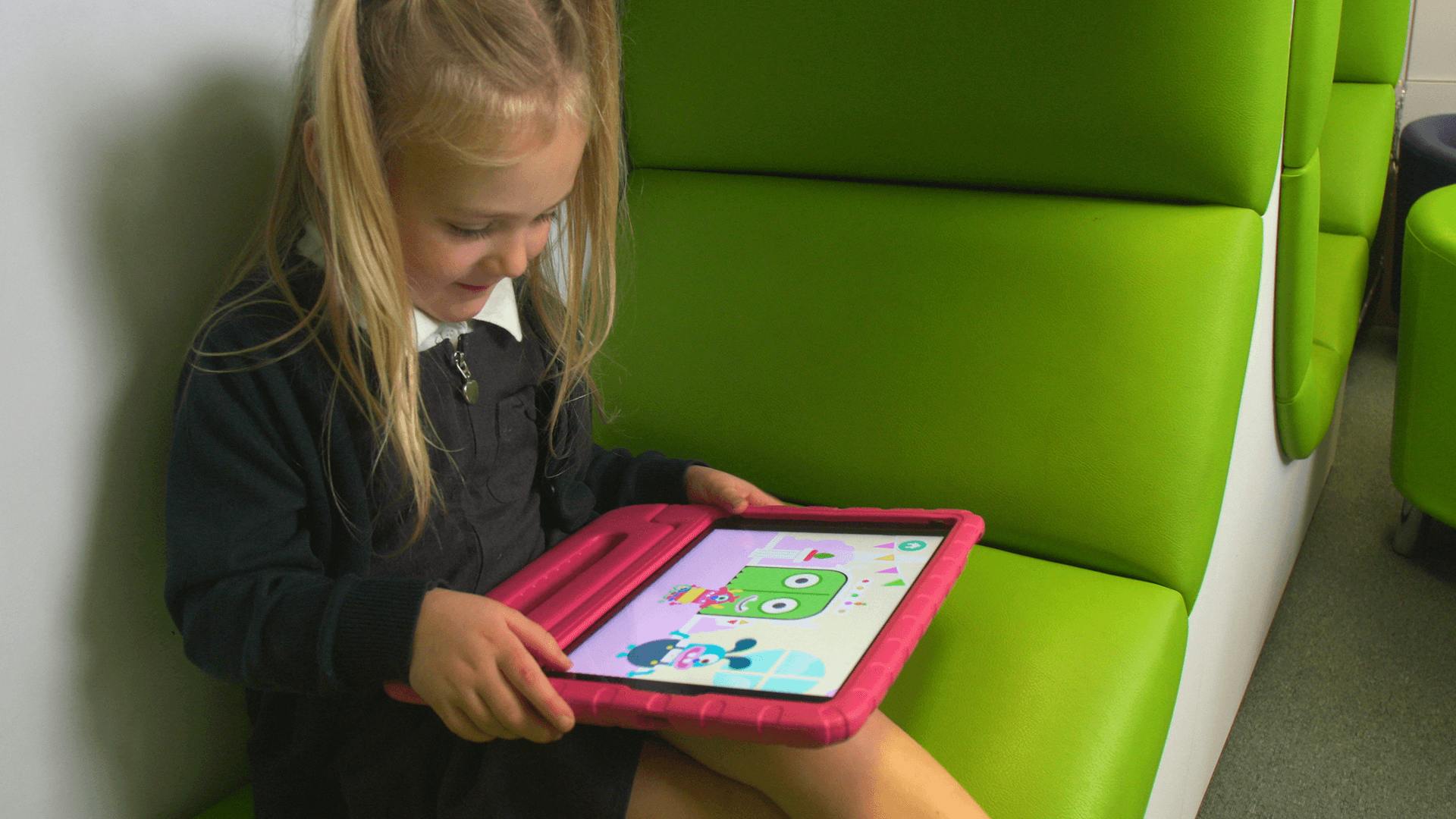
The best part is that playing our games feels like reward time — kids love iPads, and what better thing to do with reward time than some more stealthy learning?
Another teacher, Adam Samuel, recommends using the game after break times.
“I often use it to settle in back down after break time or lunch time. It's a really nice way to gently bring them back in after what could be a nice fraught break or lunch!”
I hope this has provided you with some new ideas for using the Teach Your Monster games in the classroom. We’re always looking for ways to help our teachers out so if you’d like to share your ideas on how you use Teach Your Monster in the classroom, please drop us a message at [email protected]. Happy teaching!
Kay Leathers, Ex-Primary teacher and freelance consultant
(3 minute read)
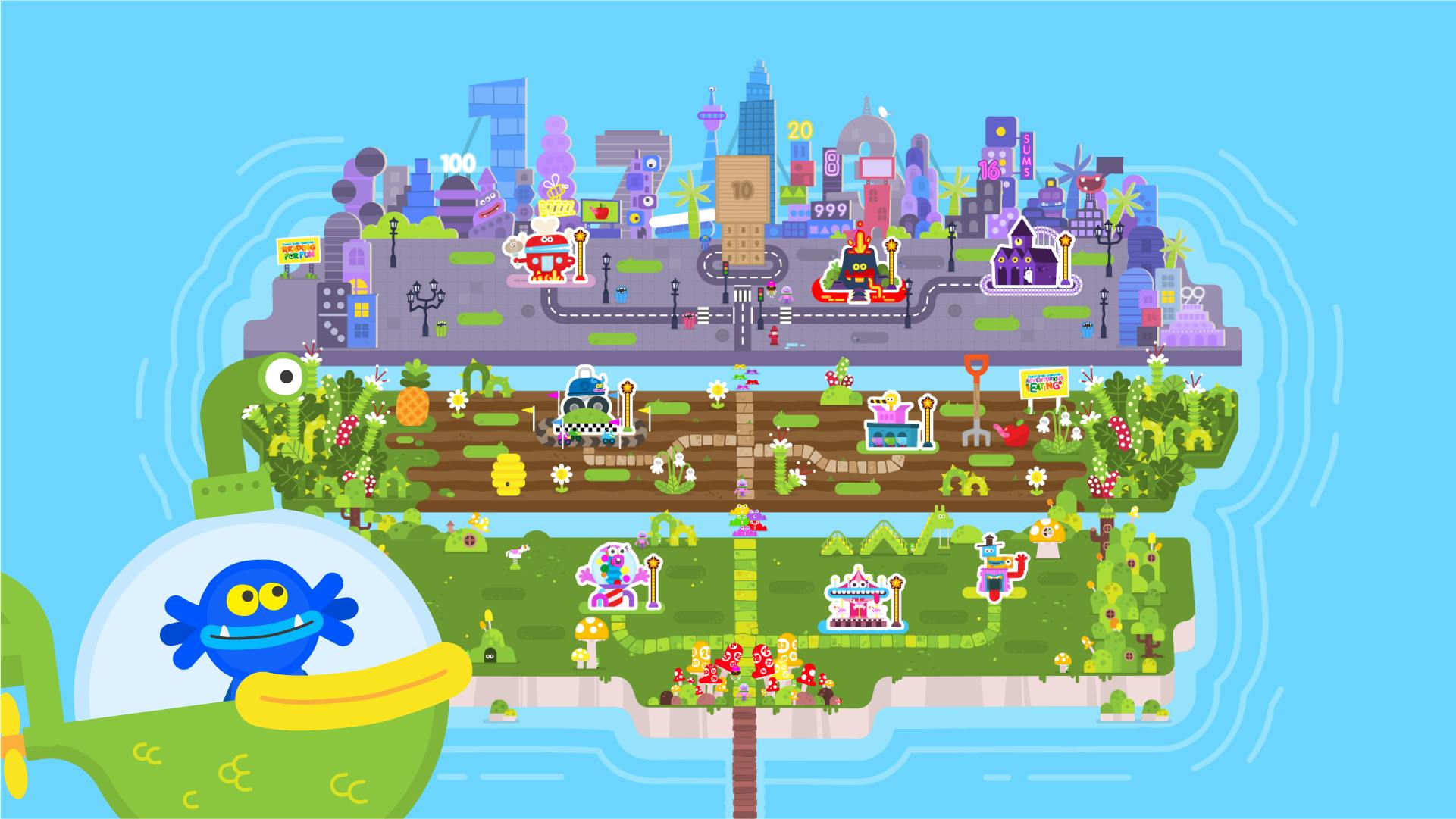
Back in August 2024, we released the Stage 3 update for Number Skills. Introducing new minigames and new skills, such as numbers to 100 and the foundations of multiplication, we thought we’d use this article to check in on Number Skills and see how it’s doing.
Adding Number Skills Stage 3 aimed to expand the educational content on offer to cover most of the mathematical pedagogical requirements for EYFS/KS1 or Year 1/kindergarten. To do this, a whole second island of seven new minigames was added, including:
Monster Trucks - Jump into a monster truck and bash the other trucks! This game helps kids to practice quickly recognising numbers to 20.
Volcano - Jump up the platforms and save your monster from the fiery lava. This game helps children get more familiar with numbers up to 100, including counting from, backwards, and in groups.
Ghost Train - Get the right queue of numsters riding the spooky ghost train! This game helps children practice addition and combining numbers (number bonds) up to 20.
Bubbles - Pop and merge bubbles to hit the target number. This game helps children practice breaking numbers apart and putting them back together (composition/decomposition).
Carousel - Arrange the unicorns in the right order and watch them spin around the carousel! This game is based on number lines or tracks, a familiar classroom tool.
Storklift - Help your monster load the right number of boxes on and off the truck. Helps with understanding place value and working with tens and ones.
Dino Dash - Quickly load up the right number of plates of snails to feed the hungry customers. This game helps with the foundations of multiplication through working with equal groups/arrays.
Following this release, we’ve tracked the data and can now report that:
- Stage 3 Adventure mode (the main gameplay) has been played by over 1.5m players (that’s roughly the population of San Antonio, Texas!)
- The Bubbles minigame alone has been played over 3 million times!
- Number Skills has had over 3.5 million players overall, with 30 million plays total.
But let’s not have the data lead the way, let’s look at some real reviews from our players:
★★★★★
It’s great!!!!! · We have been using it, and my 7-year-old is learning her numbers skills so well. ITS AMAZING!!!!!!!
Parent
★★★★★
Fantastic app!!! The only educational app my 6-year-old daughter will engage with. She wakes up asking to play it. So happy I found this app. I really hope you can make more of these to help with things like telling the time and maybe ones that can help with daily task and wellbeing. You've done a fantastic job and the fact it's just one simple affordable payment with no monthly subscription has blow my mind even more. 5 stars from me most definitely!!!
Parent
Lori Cash, US teacher said
"My students have really enjoyed doing the Experienced Level of Teach Your Monster Number Skills and several of them have completed it already. We have found it to be a good review of the skills they have learned in first grade and it has contributed to them scoring well on their NWEA test. They continue to enjoy the wonderful animated characters and have found it easy to use and understand."
We’re thrilled by the response to the newest update to Number Skills and have already had many players contact us to ask for more. We’ve got plenty of updates in the works—keep an eye on our socials and newsletter for what’s coming next!

Leo Allen, Product Manager for Teach Your Monster Number Skills
(1 min read)
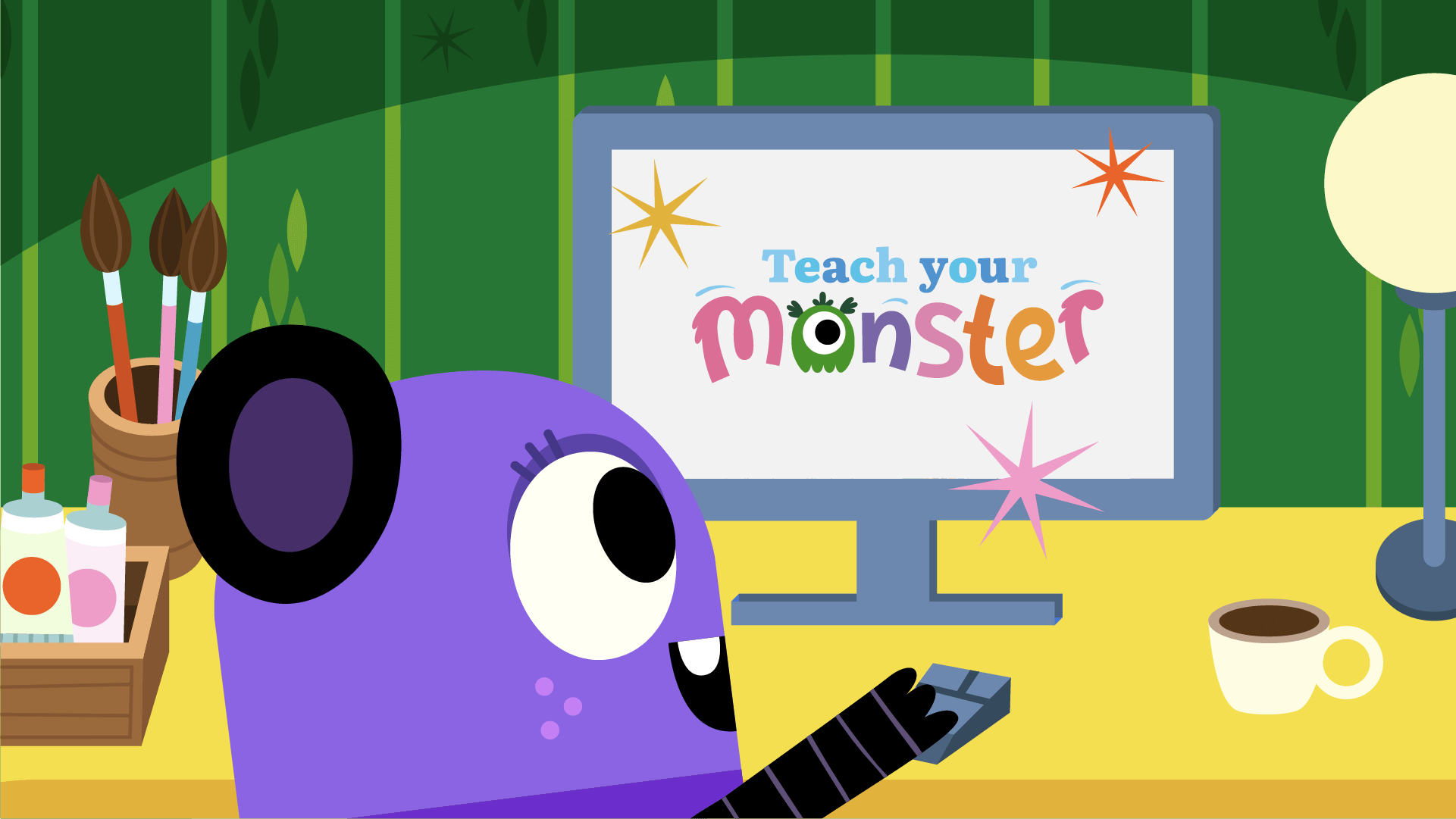
Have you seen our recent makeover? New Year — new start we say!
After asking our users what they’d like to see, we’re currently in the process of making our site more helpful for everyone by adding more useful information on our games, making our learning resources more accessible for all and adding a dedicated teacher tab, so that you busy teachers out there don’t waste any precious teaching-time searching for what you need.
We’ve started the makeover with our game pages — check out the links below. We especially LOVE the new Reading for Fun makeover, so be sure to check that one out!
Teach Your Monster to Read
Reading for Fun
Number Skills
Adventurous Eating
We’ve added information to take you through the pedagogical (educational) content, how the games work and how to integrate them into your child’s learning. Meet the experts on our expert pages, find out more about our minigames and even meet the team who worked on all these wonderful monsters!
As always, we’d like to know what our audience thinks. Please send us your feedback! Is there anything you’d like to see on our website that we don’t currently have? Let us know by contacting us via [email protected].
(1 min read)
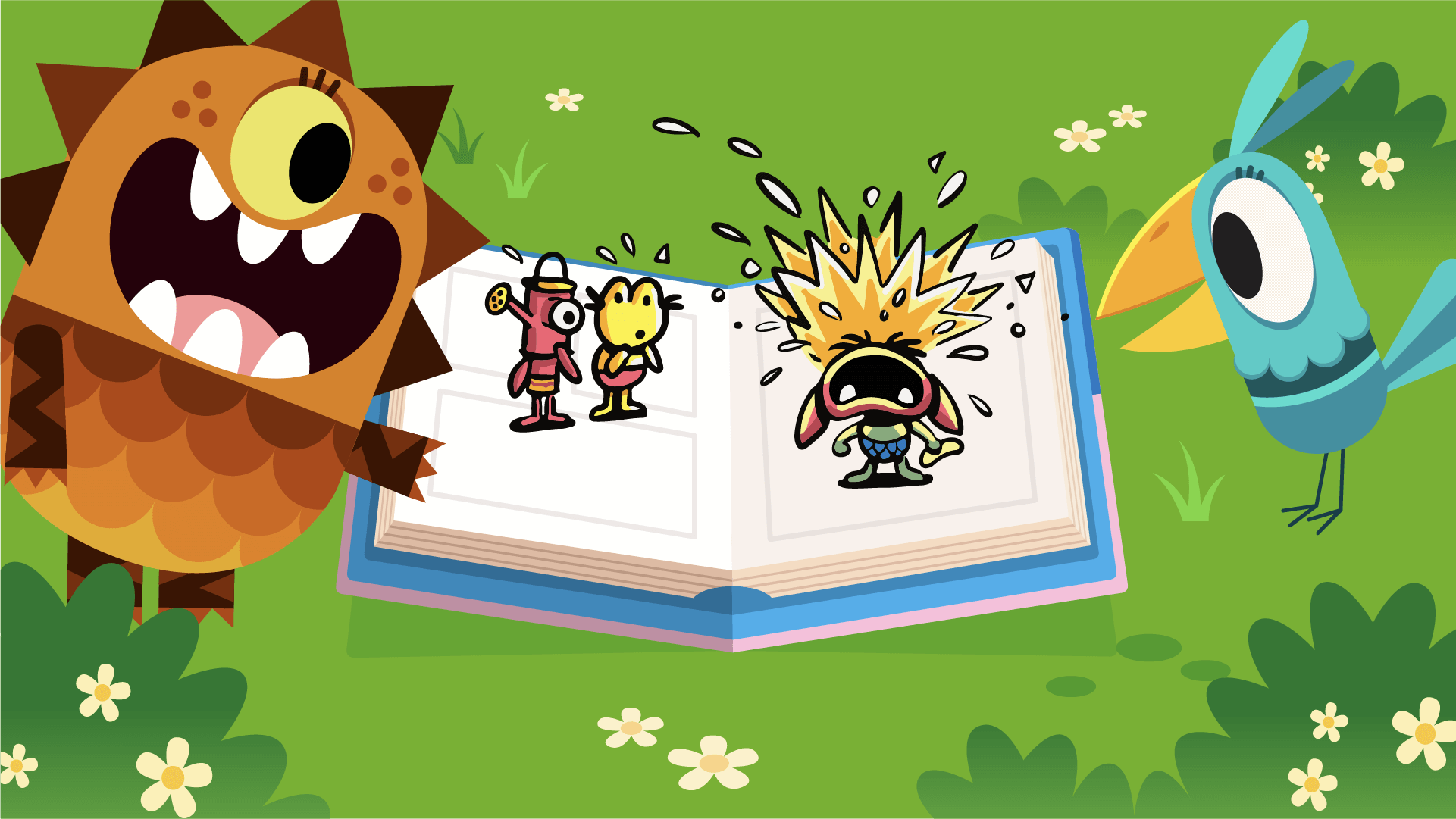
We're so excited to be adding our comic ‘Bongo Blows His Top’ to the Reading for Fun game! ‘Bongo Blows His Top’ is a story about BIG feelings and how to manage them. Created with consultancy from Dr Angharad Rudkin, a Child Clinical Psychologist, this wonderful comic explores the feelings you get when experiencing anger, helping children identify their own feelings and sharing strategies to help deal with those tricky feelings.
As well as all the more practical elements, having comics in Reading for Fun adds another genre of reading to the richness of our game, exposing kids to all types of text. As a person with a passion for illustration and someone who leans towards the more visual side of learning, comic books still make up part of my regular reading material, allowing the enjoyment of the art AND reading at the same time.
Whether your kid is a visual learner or not, they'll love this. So tell your Reading for Fun fan that we’re adding a new comic for them to put on their monster’s bookshelf, and get them to share it with you when they do… I’m sure you’ll agree it’s a great addition to our game.
The 'Bongo Blows His Top' comic gets delivered to your monster’s house from the third day in the game, and is being released as an in-app event on Apple, which runs from April 1st to 30th 2025. The free comic also goes into the Google Play, Amazon, Amazon Kids+ and web versions of the game.
Get Reading for Fun on the Apple App Store today!
Keep an eye on our social posts, as we'll announce when this has been added so you can make sure to update the game and get this comic!
If you'd like a preview of 'Bongo Blows His Top', you can download the full comic from our 'Comics' area in our Learning Resources.
Kay Leathers
Ex-teacher, illustrator and freelance consultant for Teach Your Monster.
(2 min read)

WORLD BOOK DAY! A charity that’s passionate about reading. Why? According to the World Book Day website, “Reading for fun is the single biggest indicator that a child will grow up to enjoy a happier and more successful life – more than their family circumstances, their parents’ educational backgrounds or their income.”
As you know, we are very passionate about reading here at Teach Your Monster, from learning your first letter sounds to reading longer sentences, texts and reading different types of books for pleasure.
That’s why this World Book Day, on the 6th March, 2025, we’ll offer both our literacy apps, Teach Your Monster to Read and Reading for Fun for FREE, for 24 hours only! Be sure to share the news with all the teachers and parents you know, so they can get it on the day.
We love to see how the games help support real-life reading away from the screen. We’re sure that all the parents out there are getting ready to share their favourite childhood books, or perhaps looking to pick up a new favourite using the £1/€1.50 book token.
Whatever you’re doing this World Book Day, it’s a day to celebrate the magic of reading and especially encourage reading for pleasure. We hope you and your little ones enjoy some time to sit down with a good book!
To help give you a little extra free time to relax and read, we’ve also created free reading resources, including character masks from our reading game Reading for Fun, which are perfect for a quick and easy World Book Day costume... Happy reading!
For more information about World Book Day, please visit the website.
World Book Day® is a registered charity, company and trademark.
2024 has been an incredible year for Teach Your Monster, with millions of children benefiting from our fun, educational games that inspire confidence and a love of learning. None of this happens without you! Here’s how we’ve made a difference together this year…

Building Confidence with Numbers
Since the launch of Number Skills Stage 3 in August, children have played the new mini-games 3.5 million times! This research-backed, curriculum-aligned numbers game is helping children aged 3 to 6 practise their number skills and grow in confidence in a way that’s both fun and educational, whether at school or at home.
Inspiring a Love of Reading
Our flagship game, Teach Your Monster to Read, welcomed an incredible 3 million new players in 2024, helping children around the world take their first steps into reading. Meanwhile, the delightful Reading for Fun game has been played 35 million times this year! With its quaint village setting and over 70 books to explore, children have read more than 30 million books in the game so far. One parent shared their thoughts with us:
“My daughter loves this game. She loves the books and the monsters that she interacts with. Thank you for developing such great games!!” ⭐⭐⭐⭐⭐
Encouraging Adventurous Eating
Adventurous Eating helps children explore a variety of fruits and vegetables, and it continues to thrive, with 3,000 children playing every day. Designed with Dr Lucy Cooke, an expert in children’s eating habits, this game complements early years food education and was recognised as a finalist in the Games for Change 2024 Awards in the Health and Wellness category! Get yourself into Bub’s Garden and grow some veggies today!
Supporting New Beginnings
Starting school can be a big milestone, and our brand new comic “First Day Nerves” has been a comforting resource for many families. Downloaded over 40,000 times this year, this beautifully illustrated comic (created with input from child psychologist Dr Angharad Rudkin) helps ease children into their early school days. It’s free to print in colour or black and white.
Thank you for your support
None of this would be possible without YOU, our wonderful community! By playing, sharing, and purchasing the apps, you’re directly supporting our not-for-profit mission to give millions of children the best start in life through learning, fun and play. Every penny goes back into creating new games and resources to empower children.
Thank you for making 2024 a year of incredible impact! ❤️





















